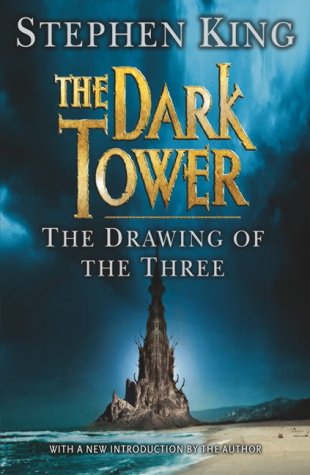The Dark Tower II:
The Drawing of the Three
The late, great film critic Roger Ebert began his review of Sam Peckinpah’s 1983 film The Osterman Weekend in the following way:
“I do not understand this movie. I sat before the screen, quiet, attentive and alert, and gradually a certain anger began to stir inside me, because the movie was not holding up its side of the bargain. It was making no sense.
“I don’t demand that all movies make sense. I sometimes enjoy movies that make no sense whatsoever, if that’s their intention. But a thriller is supposed to hold together in some sort of logical way, isn’t it?”
Now, I don’t agree with Roger’s assessment of Peckinpah’s movie here at all; and perhaps if he were still alive and revisited that flawed piece of genius he would have a different opinion today. Over thirty years later and with the Cold War a part of ancient history, I would argue that it is more relevant now than it ever was back then, especially as we live in a world where idiots get themselves in a knot over the goings-on in TV reality shows. For in that respect The Osterman Weekend was ‘way ahead of its time. John Hurt still has the power to chill as the renegade CIA agent and sinister ringmaster who is pulling the strings of people inside a house that has been packed with cameras.
Still, I do get what Roger was saying. With any work of fiction the writer surely enters into an unspoken compact with us, the readers. He asks us to trust him for the duration of time that we spend with him. And with the very best of iconic characters—Tarzan of the Apes, James Bond or Sherlock Holmes for example—we often wonder what the character is doing after we’ve closed the pages of the book. Sneer at pop culture if you wish, but these characters have lived on long after their creators have passed.
All that we ask is that the created universe of the story is consistent and faithful to its own laws.
It is an even more tenuous agreement when we are reading a work of pure fantasy; and that is why I almost gave up on The Drawing of the Three. There are so many errors here that you tend to think that if the writer can’t be bothered with paying attention to what he’s written, then why should we?
Since the story does keep you reading, however—this is King we’re talking about, after all—I’m going to be generous and blame it on whoever the hell his editor was. There’s just no excuse for some of the slips here; slips that are really damaging since they immediately pull us out of the fantasy and remind us that this is just a guy who is making everything up. And that’s not on.
The story takes up where it left off in the first volume, The Gunslinger. Roland makes his way across the mountains, coming out of the East onto a beach that appears to be as endless as the desert previously was. Having arrived there he feels the Tower drawing him North, and there’s the first problem right there: because in at least three instances that I noticed, the Western Sea is described as being on his right and the mountains being on his left. And it should be the other way around. A bit pedantic? A bit OCD? Perhaps. But this is a fantasy and that clean and jerk that makes you keep believing in what you are reading needs a clear consistency for you to get that weight up. It’s something that King himself has spoken of in the past.
Roland comes to three doors along the way which are gateways to the New York City of various times and draws forth the others who will be his companions—and last gunslingers—on his quest for the Tower. These are Eddie Dean, a junkie; and Odetta Holmes, a schizophrenic young black woman whose legs have been amputated in a gratuitous act that is in its way as shocking as anything that King has ever written.
Problem number two: Eddie’s age is given clearly as being 21; yet when he talks of himself to Odetta he tells her that he was born in 1964 and was drawn in 1987! Now that just pisses me off. In fact in a moment’s idleness I googled Drawing of the Three Errors and was appalled to see that there is an actual webpage (there may be more, I was afraid to look farther) that details all the mistakes made throughout the volume.
I’m not one to wish anyone out of a job in these dark times but King’s editor should have been walking the streets on his own quest after that. There’s just no excuse for it, considering the money that King makes for his publishers.
As you’ll have gathered, this is less a review than me taking advantage of my blog to air my frustrations.
And Volume Two still feels like an introduction and at the same time as if we have come in half-way through.
I will be reading the third volume, The Waste Lands. Just not yet, Lord; not yet.
And the Tower is no closer.


Recent Comments